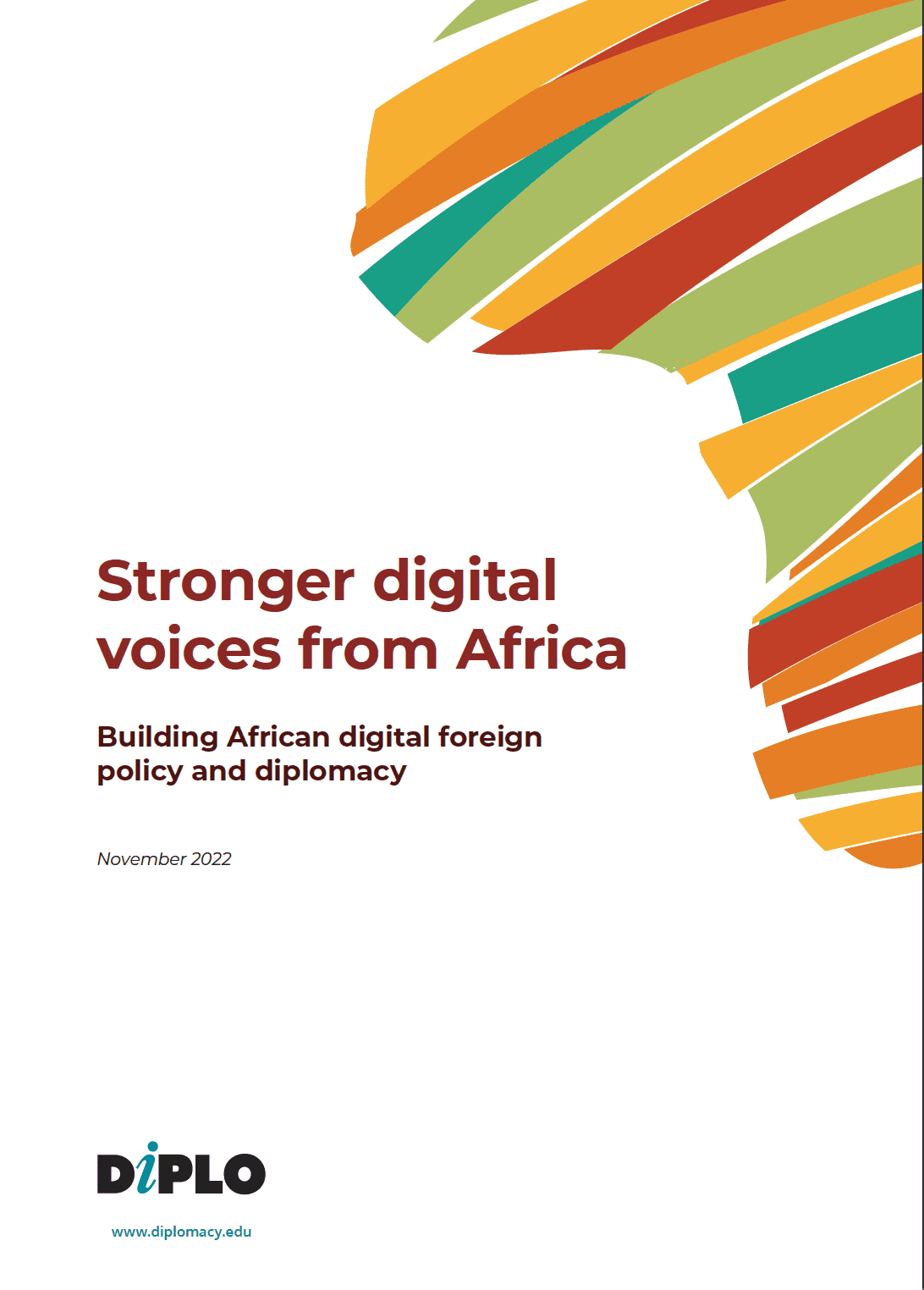Digital infrastructure and standards in Africa: Continental and regional policies and their international elements
Read full report Stronger digital voices from Africa: Building African digital foreign policy and diplomacy.
At the continental level, one of the Agenda 2063’s goals is to connect Africa through world-class infrastructure. This includes financing and implementing major ICT infrastructure projects so that Africa is ‘on equal footing with the rest of the world as an information society, an integrated e-economy where every government, business, and citizen has access to reliable and affordable ICT services’.1African Union [AU]. (n.d.). Flagship projects of Agenda 2063.
Digital infrastructure is also one of the pillars of the African Union‘s (AU’s) Digital Transformation Strategy, which outlines priorities and goals related, among other issues, to closing the digital infrastructure gap, achieving accessible, affordable, and secure broadband, and establishing and improving digital networks.
While many of the policy recommendations and actions proposed in the strategy relate to measures that governments should be taking at the national level, there are also references to international engagement and goals the region should be pursuing in its international relations.
For instance, one of the proposed actions is to attract major equipment manufacturers to install factories across the continent, as a way to ‘generate added value in Africa and ensure the long-term viability of telecommunications infrastructures, which are still very precarious, given the lack of a balanced financing plan for their maintenance, development, and renewal’. AU countries are also called to ‘work with international institutions, including the ITU, to adopt rules on the evolution of technologies, and more particularly the standards on equipment to guarantee the technological interoperability of one generation of equipment to another’. Working with international partners on boosting investment in telecom infrastructure is also envisioned.2African Union [AU]. (2020). The Digital Transformation Strategy for Africa.
Across regional economic communities (RECs), there are multiple policy initiatives and projects that cover matters related to digital infrastructure and standards; several of them contain elements of digital foreign policy. SADC’s Protocol on Transport, Communications and Meteorology – which requires member states to develop harmonised telecom policies, infrastructure strategies, and technical standards – notes that states shall pursue their goals of achieving regional universal access to ICT infrastructure and services through participating in regional and international telecommunications forums. They will also promote international standards and participate in the work of relevant international bodies such as ITU and ISO. Moreover, member states agree to coordinate their positions on matters dealt with at all international telecommunications and other relevant forums.3Southern African Development Community [SADC]. (1996). Protocol on Transport, Communications and Meteorology in the Southern African Development Community (SADC) Region.
SADC’s Development Plan for 2020–2030 has among its strategic objectives the establishment of quality, interconnected, integrated, and seamless infrastructure and networks. Attracting foreign investments in infrastructure and ensuring alignment between regional, tripartite, continental, and international agreements ‘to ensure integrated approaches that optimise synergies for the development of infrastructure and services in the region’ are among the plan’s envisioned objectives.4Southern African Development Community [SADC]. (2020). SADC Regional Indicative Strategic Development Plan 2020–2030.
ECOWAS’s Act on the management of radio frequency spectrum asks member states to coordinate spectrum use at regional and international levels, and to respect ‘ITU international allocations’ when managing radio frequencies. A regional committee is tasked with discussing matters of international relevance in the context of spectrum management.5Economic Community of West African States [ECOWAS]. (2007). Supplementary Act A/SA.5/01/07 on the management of the radio-frequency spectrum.
The fact that the importance of coordinating African positions to take in international processes is highlighted across these documents is encouraging. It signals that countries and the regional/continental organisations are acknowledging that speaking with one voice – as much as possible – at an international level offers them more chances to ensure that African interests are well represented and meaningfully considered. Actively encouraging such coordination and creating more opportunities for it to happen is a task that both RECs and the AU should pursue in a more consistent and sustained manner.
When it comes to digital standards, the African Organisation for Standardisation (ARSO) issued a 4th Industrial Revolution Standardization Strategy in 2021 (in cooperation with the Institute of Electrical and Electronics Engineers – IEEE), with the overall goal of harnessing the potential of technical standards to implement the fourth industrial revolution across the continent. The strategy highlights the importance of enhancing African representation in ‘global standardisation and technology governance environments’ and calls for active participation of regional stakeholders in the definition and adoption of international standards; the taking of leadership positions within international standardisation organisations; and the establishment of partnerships with international standardisation organisations to support capacity building in the standardisation field for African countries.6Institute of Electrical and Electronics Engineers [IEEE]/African Organisation for Standardisation [ARSO]. (2021). Africa 4th Industrial Revolution Standardization Strategy (2021–2025). The extent to which most of these recommendations could be put into practice very much depends on whether the national standardisation bodies have the capacity and resources not only to follow international standardisation work themselves, but also to coordinate national positions with domestic stakeholders, and to encourage such stakeholders to contribute themselves to international processes.



